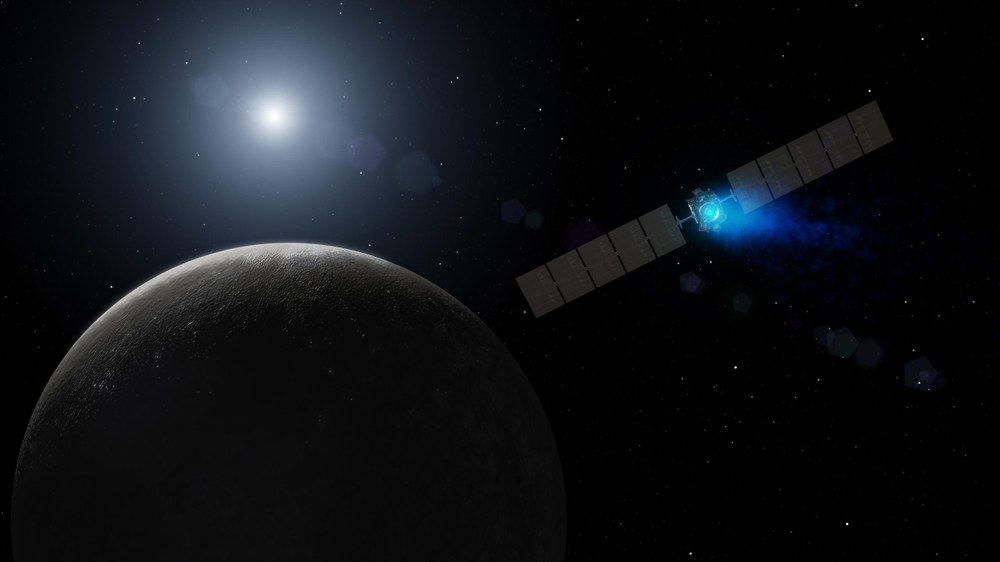Dawn in orbit around icy Ceres



NASA's Dawn spacecraft entered orbit around the dwarf planet Ceres on 6 March 2015 at 13:39 CET. In order for Dawn to be captured by Ceres' gravitational field, the spacecraft started using its ion engines from a distance of 61,000 km to slow the spacecraft down. During this process, no image acquisition with the German-built Framing Camera on board the spacecraft was possible. "The solar arrays, which are a total of almost 20 metres across, had to be aligned with the Sun during this manoeuvre; therefore, the camera could not be pointed in the direction of Ceres," explains Ralf Jaumann from the German Aerospace Center (Deutsches Zentrum für Luft- und Raumfahrt; DLR). The planetary scientist is a member of the camera team, and is waiting anxiously for the next images, which will be acquired in April at distances of 33,000 and 22,000 kilometres. Prior to this, the Dawn spacecraft will disappear behind the dark, Sun-opposed side of the dwarf planet until mid-April.
Getting closer to the surface
Seven and a half years after launch, and after a journey of nearly five billion kilometres, Dawn has arrived at its second mission objective. Dawn orbited its first target, the asteroid Vesta, during 2011 and 2012, and thousands of images were acquired. The spacecraft's orbit around Ceres will become gradually closer to the dwarf planet. From 23 April 2015, the camera will be observing Ceres from a distance of 13,500 kilometres from the surface and will explore the dwarf planet from this altitude for 20 days. "Then, we will be able to see much more detail and better interpret what is being observed," says Jaumann. "With the 'third dimension', that is, a topographic relief map of the surface, we will be able to perform an increasingly accurate analysis of the surface features." At this point the DLR Institute of Planetary Research will also be able to create the first complete, three-dimensional digital terrain model of Ceres. By the end of 2015, Dawn will close in to just 375 kilometres above Ceres. Three instruments on the spacecraft will spend a total of 18 months exploring the dwarf planet.
Ceres was discovered in 1801 and designated as a planet. It was later classified as an asteroid and finally placed in the newly defined class of dwarf planets in 2006. With its orbit around the Sun, its spherical shape and a diameter of 950 kilometres, Ceres was in the process of becoming a planet during the formation of the Solar System. However, the gravitational field of Jupiter probably thwarted this, so Ceres remained only partially developed. This makes it of interest to planetary scientists: "It embodies a stage of planet formation that can provide us with information about what happened 4.6 billion years ago," says Jaumann.
The Dawn mission
NASA's Jet Propulsion Laboratory (JPL) in Pasadena manages the Dawn mission; JPL is a division of the California Institute of Technology. The University of California, Los Angeles, is responsible for the overall Dawn mission science. The camera system on the spacecraft was developed and built under the leadership of the Max Planck Institute for Solar System Research in Göttingen, Germany, in collaboration with the DLR Institute of Planetary Research in Berlin and the Institute of Computer and Communication Network Engineering in Braunschweig. The Framing Camera project is funded by the Max Planck Society, DLR, and NASA/JPL.
